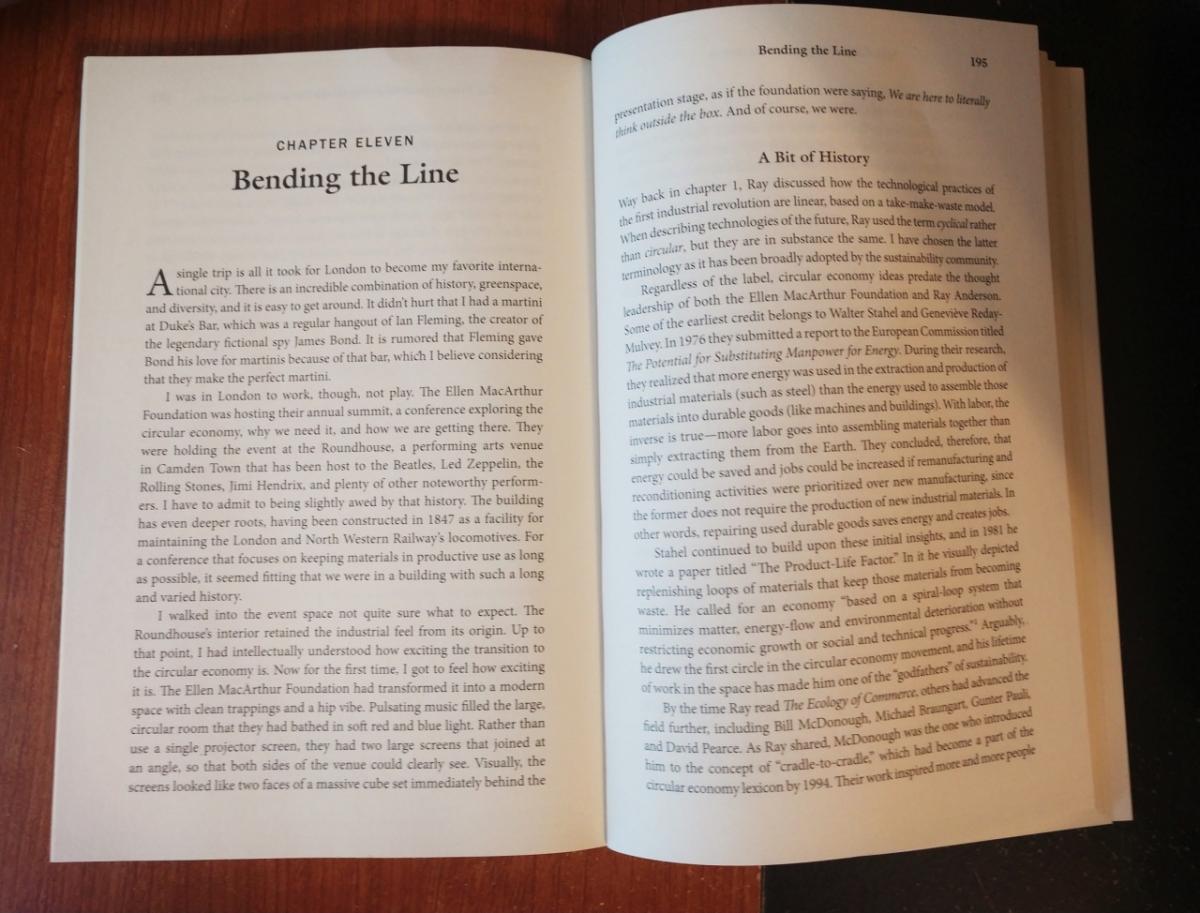Bending the Line: How Better Design Can Transition a Linear Economy to a Circular One
By: John A. Lanier - Reprinted from GreenBiz

Bending the line: How better design can transition a linear economy to a circul…
Excerpted from "Mid-Course Correction Revisited: The Story and Legacy of a Radical Industrialist and his Quest for Authentic Change," by Ray C. Anderson and John A. Lanier (Chelsea Green Publishing, 2019). All rights reserved.
If you want to keep material from becoming waste, a good place to start is to keep material from becoming a product in the first place. This circular economy practice is called dematerialization, and it comes straight out of the Interface QUEST playbook. By creating the same-quality product with fewer raw material inputs, a business saves money and reduces demand for materials that might end up becoming waste. Dematerialization comes down to being as efficient as possible with what goes into a product.
It is a design challenge — one that Interface’s principal designer, David Oakey, took up. When Ray had his epiphany, Interface carpet tile had at least 24 ounces of face fiber per square yard, and often quite a bit more. David and his team set their sights on driving that number down without sacrificing product performance. In the following years, they have been able to strip out more than 4 ounces per square yard, saving not only material but also the energy that would have been used in manufacturing the superfluous nylon fibers. On top of that, the weight savings generate subsequent fuel savings when Interface products are shipped. David’s hard work generated multiple wins for the company.

